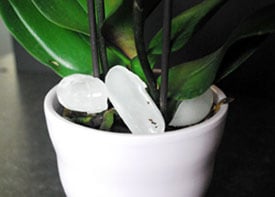
If you’re new to the orchid-growing community, there are a few basic things you should know about orchids and how and where they grow. Knowing the basics about orchid biology, habitat and growing habits will help you understand these fascinating and exotic beauties.
Contrary to what you may think, orchids grow in many different climates and environmental conditions from humid jungles to sandy deserts to alpine cliffs. Unlike most flowers, orchids are not necessarily rooted to the ground. Those that do grow in the ground are called “terrestrials.” Many orchids, particularly in tropical areas, grow in trees. Called “epiphytes” which means “growing in air,” these orchids root themselves in the rich organic matter that collects in the crotches formed by tree branches. The third branch of the orchid family, called “lithophytes,” grow on rocks.
As you might imagine, different growing habitats require different root systems. Some orchids have winding, tuberous roots; others have fine, threadlike roots. Some orchids, including Cattleyas and Ocidums sport pseudobulbs, large, bulbous, fleshy roots that grow alongside old growth. Most orchids grow in gracefully arching racemes with blossoms spaced along the stem in a colorful row from base to tip. Others grow on a wild tangle of thin stems. Just Add Ice Phalaenopsis orchids have an upward growth pattern, their leaves reaching up in graceful towers.
Most orchids have fleshier stems, leaves and petals and than most plants. Watering is the key to the success of growing orchids. Phalaenopsis orchids use their roots to suck up moisture, storing it in fleshy plant parts for later use. The fleshier the root system, the less frequently the plant requires watering. Hairy root orchids require daily watering, but orchids with thick, fleshy pseudobulbs store sufficient water to require only weekly watering. To water easy-care Just Add Ice Orchids, simply place 3 ice cubes on top of the growth medium once a week.

Copyright Just Add Ice® Orchids 2023